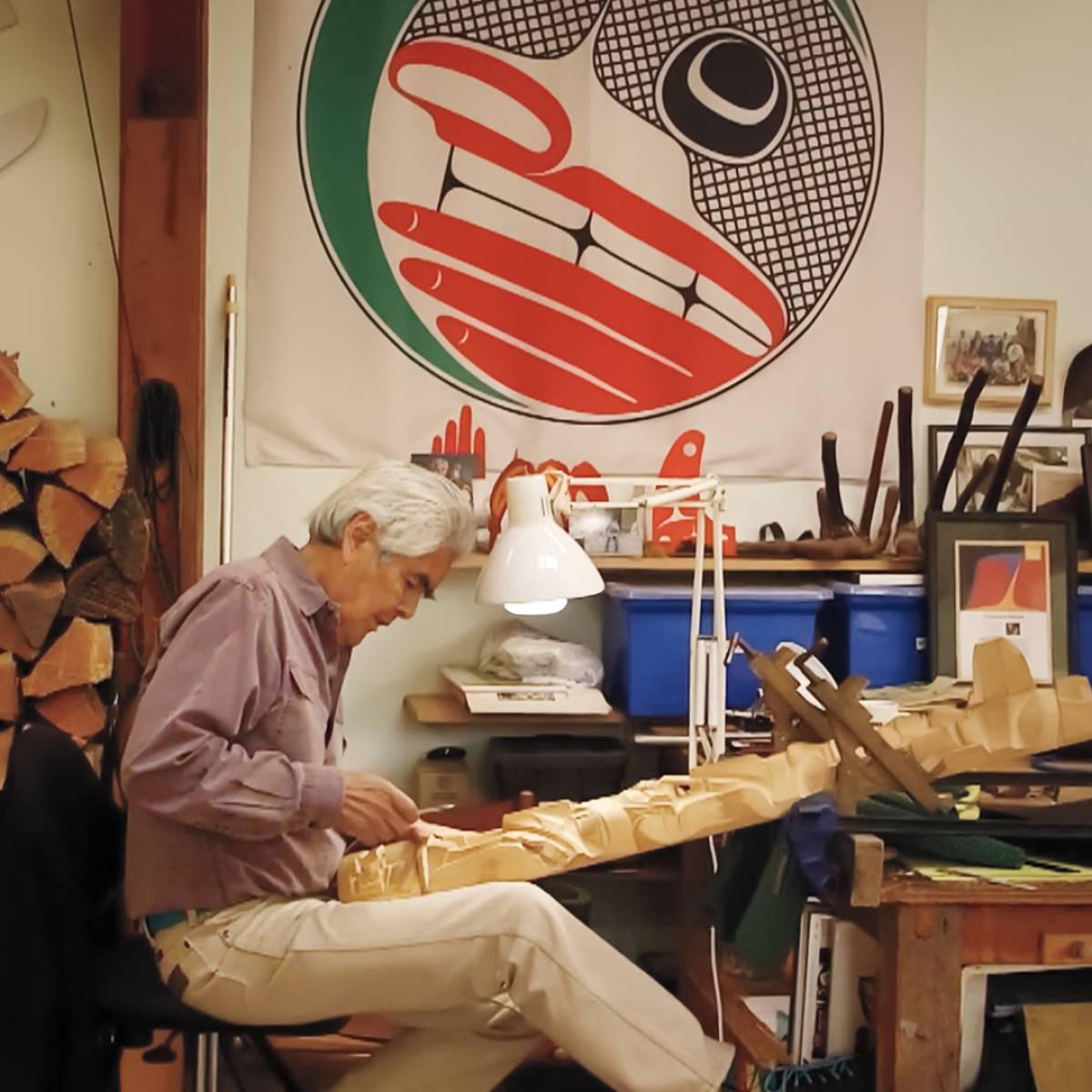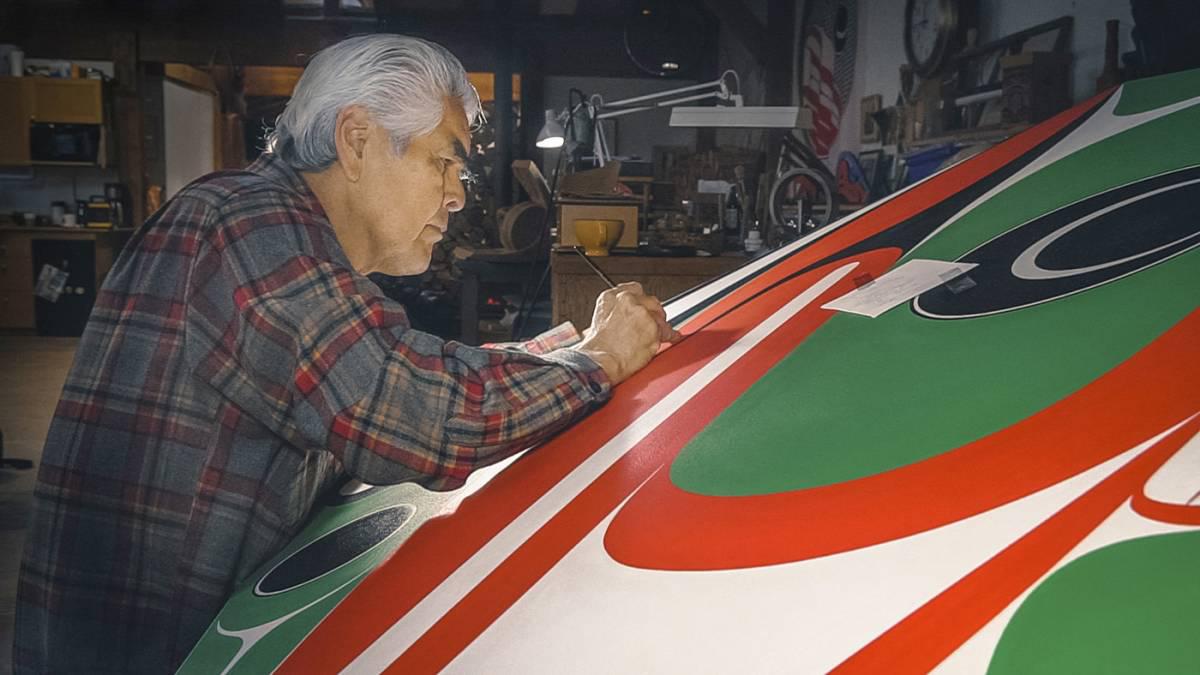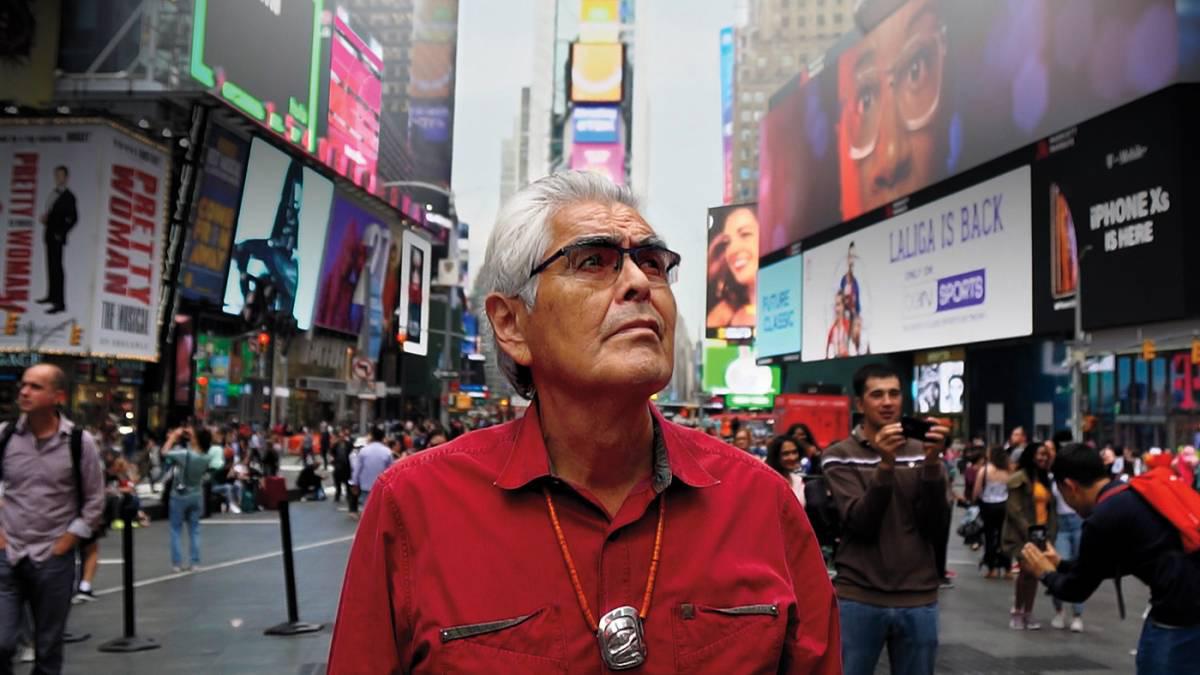As Haida Modern makes its streaming debut, artist Robert Davidson talks about the film
The Georgia Straight | May 27, 2020
Categories: news
As Haida Modern makes its streaming debut, artist Robert Davidson talks about the film's eco messages in the time of COVID-19
Janet Smith / The Georgia Straight / May 27, 2020

Photo Courtesy of Tina Schliessler.
Spending pandemic lockdown in his White Rock studio, artist Robert Davidson sees the world playing out one of the main messages in Haida Modern, the documentary making its broadcast and streaming debut on the Knowledge Network.
The film, which traces the septuagenarian’s life and role in the renaissance of Haida and Indigenous art, shows how the meticulously rendered creatures on Davidson’s totem poles, masks, paintings, and prints are inextricably linked to nature and its spiritual presence.
“When the pandemic was declared I said, ‘Holy shit! What a brilliant idea.’ Because we have been in this journey of destruction, destroying this incredible world we live in,” the legendary artist and activist tells the Straight during a conference call with Vancouver director Charles Wilkinson. “The one percent’s been raking it all in with no regard for the future. I think of my grandchildren and what we’ve left for them.
“Sure, a lot of people are hurting from this pandemic,” he adds, “but I hope we will learn the lesson—and if we don’t get the lesson now, there will be another one.”
Davidson sees the pandemic as nature hitting the pause button, throwing us into a state of ’iihldaa, the Haida word for “transformation”. “Nature keeps being the victim,” Davidson laments, pre-COVID-19, in the film, which intercuts studio sequences, artworks, and Davidson’s high-profile American museum appearances with shots of the pristine coastal landscapes of Haida Gwaii. “I am very concerned for the state of western culture.”
“To me, it’s really the core of the film and the core of the message that Robert has been putting into his work for his whole life,” says Wilkinson (who has directed other films like Haida Gwaii: On the Edge of the World and Vancouver: No Fixed Address).

Spending hours with Davidson in his studio as he carved a massive totem pole, Wilkinson drew a new appreciation for the patience and quiet reverence for nature the artist channels.
“You have your own speed, Robert,” Wilkinson, also a seasoned TV director, says with a laugh. “It was a tremendous delight to just watch, slow down, and shut up. It was a very meditative experience—a shoot unlike anything I’ve ever done before.”
Some of the documentary’s most mesmerizing moments are wordless, with Wilkinson or cinematographer-producer Tina Schliessler’s camera only inches from the razor-sharp tools Davidson wields to conjure stylized images out of timber. Watching the precision and artistry so close up was “breathtaking”, Wilkinson says.
“I do have my moods, sometimes I’m deep in thought and sometimes it gets irritating,” admits Davidson, laughing, as humble in conversation as he comes across in the film—despite artists like Vancouver’s Shawn Hunt calling him a “rock star” on-screen. “Sometimes I’d say, ‘You’re only allowed one question.’
“I know it comes from my background,” the artist reflects. “When I would be learning from my grandfather, I would always have all these questions and he would give me a really dirty look, like ‘Just watch what I’m doing!’ So I learned to watch something unfold.”
Haida Modern, which won the prize for most popular Canadian documentary at its Vancouver International Film Festival debut last year, traces the artist’s development, from growing up in Masset to moving to Vancouver to attend Point Grey Secondary School, then apprenticing with master Haida carver Bill Reid and studying at the Vancouver School of Art. Some of the most striking archival footage comes from 1969, when he carved and raised the first totem pole on Haida Gwaii in almost a century—in part, his answer to the aching absence of art there growing up. What strikes you most is how young and boyish he is for such a seminal act—one that spurred a movement that would make Haida art a global force.
“When I meet someone now who’s 20 years old, I realize how young I was,” he says. “But I didn’t think I was young then. It was just an idea I wanted to pursue; I had no idea what would come of it.”

Davidson also builds enough trust with the filmmakers to open up about some of the more painful parts of his past—his struggles with alcohol, his reckoning with his father, and his awakening to the generational effects of residential schools—another theme that works its way movingly into his artwork in the film.
“I think being able to express that more freely now has to do with the comfort I have in my own history,” Davidson says. “I have no reason to hide, because so many people around me keep me honest.…I remember working to resolve the relationship with my dad. My aunt said, ‘Why are you always blaming your dad?’ And having that question thrown at me, I had to question why I was blaming. And it got me to stop blaming and take responsibility.”
Haida Modern reveals the close ties Davidson has forged with his own children (including artist Ben Davidson, who has a gallery in Skidegate) and grandchildren—family he misses during quarantine. He has to stay away from Haida Gwaii, for now; a visit would entail a 14-day quarantine. But he is staying connected with his family there. “Ben thought it would be good to do a Zoom call with the grandkids and tell them the old stories,” Davidson says.
As for this time away from the landscape and ecosystem that so inspires his work, he says it’s ingrained enough that he has a rich “image bank” to draw from during the pandemic. As he says before heading back to putting the final touches on the yearlong totem-pole carving that features so prominently in the film: “It’s working on intuition, like the images are already there, and the artist’s role is to make that visible for this world.”
Haida Modern airs on the Knowledge Network on Monday and Tuesday (June 2 and 3), and streams for free at www.knowledge.ca/.



